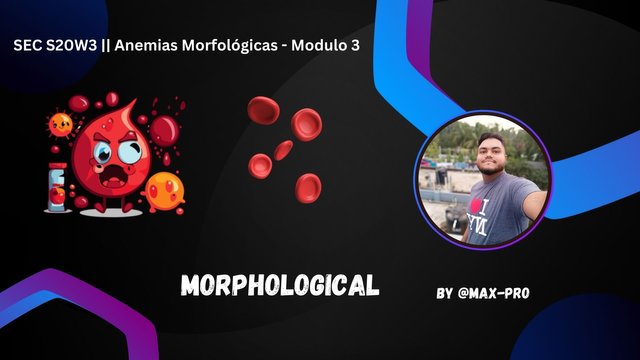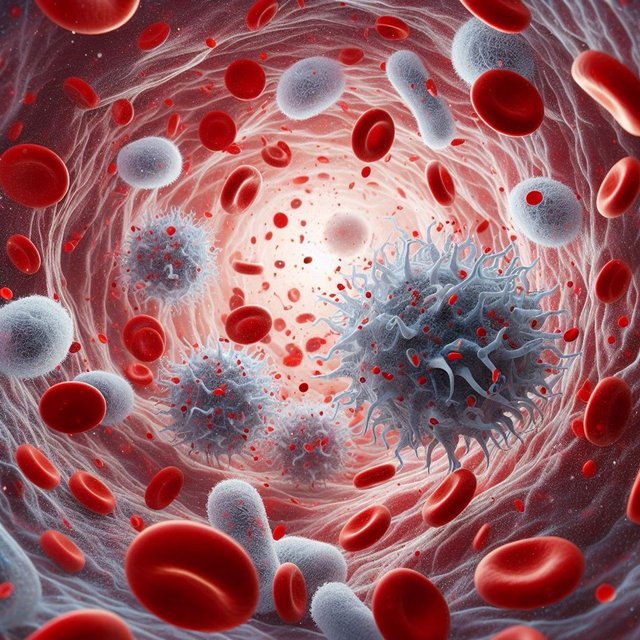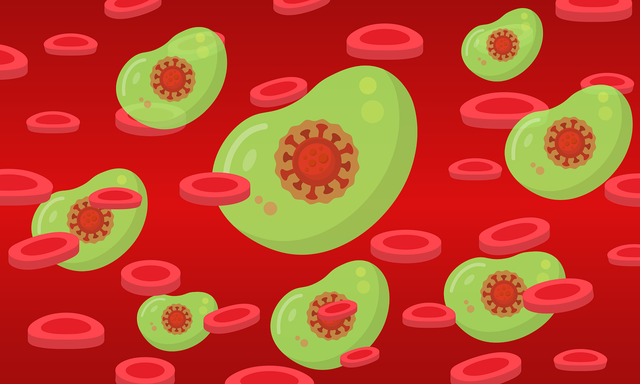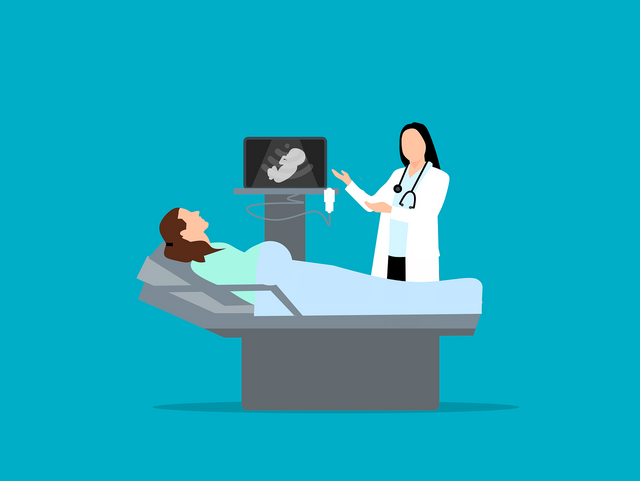SEC S20W3 || Anemias Morfológicas - Modulo 3
Greetings and greetings to all. Wishing everyone good health. Hope you are all well and enjoying the 3rd week of engagement contests. That's why I came here to take entry with great pleasure. today's topic is sec s20w3 || anemias morfogicas - modulo 3. So I will go deep into the discussion by answering a few questions on this topic. I hope you will stay with me till the end.
Defines Morphological Anemia :-
Morphological anemia is a blood disorder in which blood cells change in shape and size from normal. It is usually caused by a lack of hemoglobin, which is needed to transport oxygen to the body's organs.
It is caused by abnormal shape and size which reduces the efficiency of the blood and causes problems in oxygen reaching different parts of the body. Generally it is divided into three main categories:
Microcytic Anemia :- In this type of anemia, the red blood cells are small in size. It is usually caused by iron-deficient anemia.
Macrocytic Anemia :- In this type of anemia, the red blood cells are large in size. Usually caused by vitamin B12 or folate deficiency.
Normocytic anemia :- In this type of anemia, the size of the red cells is usually normal, but the total blood volume is reduced. This condition can be caused by chronic diseases, kidney problems or bleeding.
Symptoms of this anemia include fatigue, weakness, shortness of breath and skin discoloration. Treatment is usually based on determining the cause. Amorphous anemia is a medically necessary condition that disrupts the body's normal functions. It is possible to recover from this if you take treatment after consultation with a doctor.
Have You Ever Had Anemia? Attach Evidence :-
Anemia is a physical condition in which the level of hemoglobin in the blood is lower than normal. Hemoglobin is a protein found in red blood cells and transports oxygen to the cells of the body.
No, by the grace of Allah I have never been anemic. I had a blood test and all the reports were fine. It mostly happens to women. But my mother was anemic during pregnancy. Then the doctor told the following reasons.
During pregnancy, the body's need for iron increases because the mother has to increase blood production for the baby. If iron is not available in the diet, anemia occurs. Vitamin B12 and folate vitamin B9 requirements also increase during pregnancy. The amount of blood in the body increases by about 50%. But if the hemoglobin in the blood is not enough, then anemia can occur, the doctor said. Hormonal changes during pregnancy can affect the body's blood production process.
- Proof through testing :- It should be noted that the normal range for men is 13.5–17.5 g/dL and for women 12.0–15.5 g/dL. Below this indicates anemia.
Pathophysiologically, What Happens With Anemia?
Pathophysiologically, anemia is a condition in which the body does not have enough hemoglobin or red blood cells. This results in reduced oxygen supply to different parts of the body which can cause a variety of symptoms and effects. Following are the major changes that occur in anemia.
Lack of oxygen :- Fatigue, weakness and lack of physical energy are experienced when oxygen does not reach the tissues and organs of the body.
Enlargement of the heart :- The heart rate increases to compensate for the lack of oxygen, putting pressure on the heart and causing it to enlarge.
Changes in Hemoglobin :- Anemia can be due to various reasons. Such as due to iron deficiency, vitamin deficiency or other diseases. It reduces the level of hemoglobin.
Bleeding :- In some cases of anemia, there is a lack of blood due to chronic bleeding (such as endoscopy or gastric ulcers).
Hermatological changes :- Blood signals change. For example, the number of blood cells decreases and the shape of the cells may change.
Other symptoms :- Skin may turn white or pale, dizziness, shortness of breath, and frequent urination.
Clinical case :-
Morphologically classify anemia and explain what I understand about clinical cases. Based on the circumstances and hematological findings of this woman, the analysis of anemia and her clinical condition is as follows:
⭕ Classification of Anemia.
Hemoglobin :- 9 g/dL (Normal range: 12-16 g/dL for women) – This indicates that he is suffering from anemia.
Cell volume :- 71 fL (normal range: 80-100 fL) – this is low, indicating microcytic anemia (small blood cells).
Hemoglobin Content :- 24 pg (Normal range: 27-31 pg) – This is also low, indicating that the amount of hemoglobin in the blood cells is low.
Concentration of Hemoglobin :- 27 g/dL (Normal range: 32-36 g/dL) – This is low, which is a common feature of anemia.
⭕ Interpretation of clinical cases.
Type of anemia : These findings indicate microcytic hypochromic anemia. This could be due to iron deficiency. Which usually occurs in female patients, especially those who suffer from heavy menstrual bleeding.
Pale appearance and fainting : A woman's pale appearance and fainting suggests that she is experiencing a lack of oxygen due to very low levels of hemoglobin.
HCG Results : Positive HCG (Human Chorionic Gonadotropin) indicates that she is probably pregnant. Some women's blood iron levels may drop during pregnancy, leading to anemia.
Infections or other conditions : Fainting and pallor can also be due to other factors such as excessive uterine bleeding during pregnancy, extra-organic causes or infections.
Therefore we realized that microcytic hypochromic anemia due to iron deficiency was probably the underlying cause of this clinical case of the woman. which is associated with pregnancy. He may suggest blood tests, iron tests and other tests if necessary for urgent treatment. Treatment will require iron supplements and other treatment options.
So I am Inviting my lovely Steemian friends @patjewell,@irawandedy, @shohana1, @bossj23, @sushanta83 to Participate in this Competition.





X share link : https://x.com/Maxpro51412/status/1839588955937034398?t=itz6mxsjouWV4JLCPwpiFg&s=19
Upvoted. Thank You for sending some of your rewards to @null. It will make Steem stronger.
Hello! You have gained a lot of knowledge on this very interesting topic, in pregnancy we must be very careful and maintain a good diet accompanied by supplements to avoid developing anemia.
Have a nice day!
Thank you so much for spending your precious time on this post and giving such a wonderful comment. I wish you success. Best wishes to you. 🥰